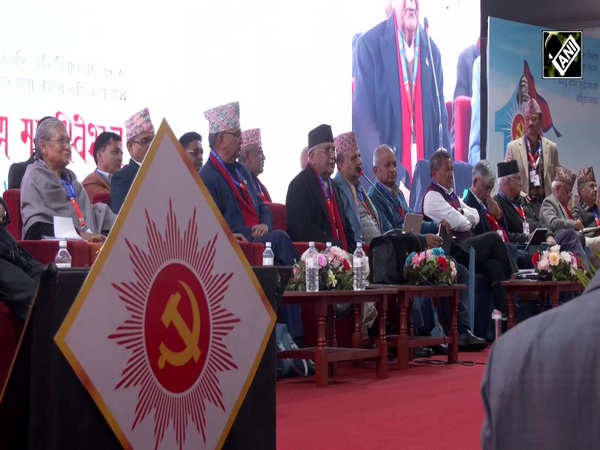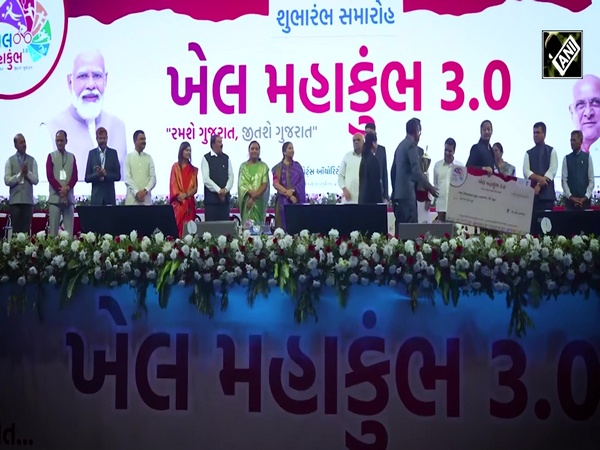For people with meniscal tears, exercise and surgery are equally effective: Study
Feb 13, 2022

Odense [Denmark], February 13 : A meniscal tear is a common injury in which forceful twisting causes certain tissue in the knee to tear. The first study in the world comparing surgical and non-surgical treatment of meniscal tears in young people showed that exercise and patient education provided similar results as surgery.
Researchers from the University of Southern Denmark (SDU) and a number of orthopaedic departments at Danish hospitals conducted a study comparing exercise and patient education versus surgery of meniscal injuries among 121 young people. The study was published in 'NEJM Evidence'.
In the United States alone, one million operations are performed every year on knee injuries, and surgery is the preferred treatment in most of the world for young people with knee injury.
In this study, the researchers demonstrated that young people with a meniscal tear initially undergoing surgery did not achieve superior outcome compared to young people starting with exercise and education, with the option of later surgery.
"Meniscal tear is a frequent knee injury and until now it has been unknown how the effects of surgery and exercise compare in young people. Knee injuries can have major consequences both in the short and long run. It is therefore important that we now know there are several effective treatments to choose from," said Soren T. Skou, Professor at the Research Unit for Musculoskeletal Function and Physiotherapy at SDU and Head of Research in PROgrez at Naestved, Slagelse and Ringsted Hospitals.
In the short term, a meniscal injury often meant absence from work or study.
Studies also showed that if one had an anterior cruciate ligament or meniscal tear, one faced a 50 percent risk of osteoarthritis 10-15 years later, and only half of patients can return to playing sports at the same level as before.
It was therefore important that patients received the treatment that is best for them. As mentioned, this may involve both targeted exercise and/or surgery.
"Changing established treatments is difficult, and surgery is usually the go-to treatment for meniscal tears. We hope that our study can make patients and clinicians, both GPs and orthopaedic surgeons, realise that there are several possible treatments," said Jonas B. Thorlund, Professor and Head of Research at the Research Unit for Musculoskeletal Function and Physiotherapy and part of the Research Unit for General Practice at SDU.
Orthopaedic surgeons from Amager-Hvidovre Hospital, Aarhus University Hospital, Aalborg University Hospital, Lillebaelt Hospital, Silkeborg Regional Hospital, Naestved Hospital and Odense University Hospital participated in the study. One of them was Per Holmich, Professor and Head of the SORC-C (Sports Orthopedic Research Center-Copenhagen) Research Unit at the Orthopaedic Surgery Department, Amager-Hvidovre Hospital.
"It is an exciting and interesting finding that among young patients with a meniscal tear, some are doing well without surgery," he said.
"As with many other diseases and injuries, choosing the right treatment for the individual patient often comes down to a variety of factors. With this study, we have shown that surgery is still a significant treatment option for many of these patients, but that the decision to perform surgery or not is not always a foregone conclusion. There is basis for further studies so that over time we can offer even more individualised treatment."
The researchers behind the current study will work to disseminate knowledge from the study through courses, materials aimed at healthcare professionals and patients, and introduce it into future clinical guidelines to ensure that it benefits as many people as possible.
"We are continuing our research in this area and are currently investigating whether MRI scans of patients two years after a meniscal injury will allow us to see signs of osteoarthritis and whether there is a difference between the scans of those who have had surgery and those who have completed the exercise programme. Our goal is to be able to show whether one or the other treatment is better at preventing osteoarthritis later in life," said Soren T. Skou.




















